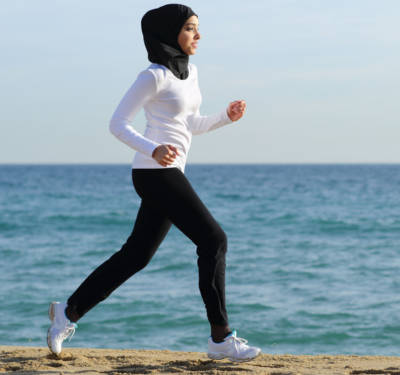The lack of physical exercise in Arab states
Between obstacles and opportunities for exercise, most Arabs still do not get enough physical activity.
Published online 31 July 2015

© Antonio Guillem Fernández / Alamy
Obesity is a growing healthcare problem worldwide, and especially throughout the Middle East. The fast adoption of a Western lifestyle, among other factors, has led to reduced physical activity and an increase in the consumption of sugars and saturated fats.
The World Health Organization (WHO) recommends that healthy adults should have at least 150 minutes of moderate exercise per week. According to recent studies, however, only 40% of men and 27% of women in the Gulf Cooperation Council countries reported being physically active for that amount of time. In Qatar, nearly half of 18- to 19-year-olds have insufficient levels of physical activity, and this rate increases substantially with age.
Epidemiologists Kathleen Benjamin and Tam Truong Donnelly of the University of Calgary in Qatar reviewed the relevant literature in order to identify the factors that promote physical activity among Arab adults, and those that act as barriers to it1.
They searched several large databases for relevant English-language studies, using keywords and phrases such as “physical activity,” “exercise,” “Middle East,” “challenges,” and “enablers,” and found 47 articles, and then eliminated 32 of these, because they did not include data on Arab adults, or because they did not focus on the barriers and facilitators of physical activity.
From their review of the remaining 14 articles, Benjamin and Donnelly find that the two most commonly reported barriers to physical exercise were lack of time, largely due to competing factors such as household chores, childcare, and extra office care, and the presence of health conditions such as heart disease, osteoarthritis and asthma. Other participants reported lack of interest or motivation, fear of injury, and excessive internet usage as major barriers to physical activity.
Some of the reported barriers are related to cultural and social norms. Traditionally, women in some Muslim-majority countries need to be accompanied by a male relative when outdoors. This, together with their expected role in the home and the traditional dress many wear in public to preserve their modesty, further reduces Arab women's opportunities for exercise. Other major reasons for lack of activity included the lack of appropriate facilities, and the hot weather in the region.
The most common facilitators of physical activity were the presence of a health condition or heath scare, such as a heart attack, which motivated people to become more active. Religion was also cited as another major facilitator, with several people contending that the Quran also encourages physical activity.
Reference
- Benjamin, K. & Donnelly, T. T. Barriers and facilitators influencing the physical activity of Arabic adults: a literature review. Avicenna 2013, 1 (2013). | article
DOI: 10.1038/qsh.2015.74

